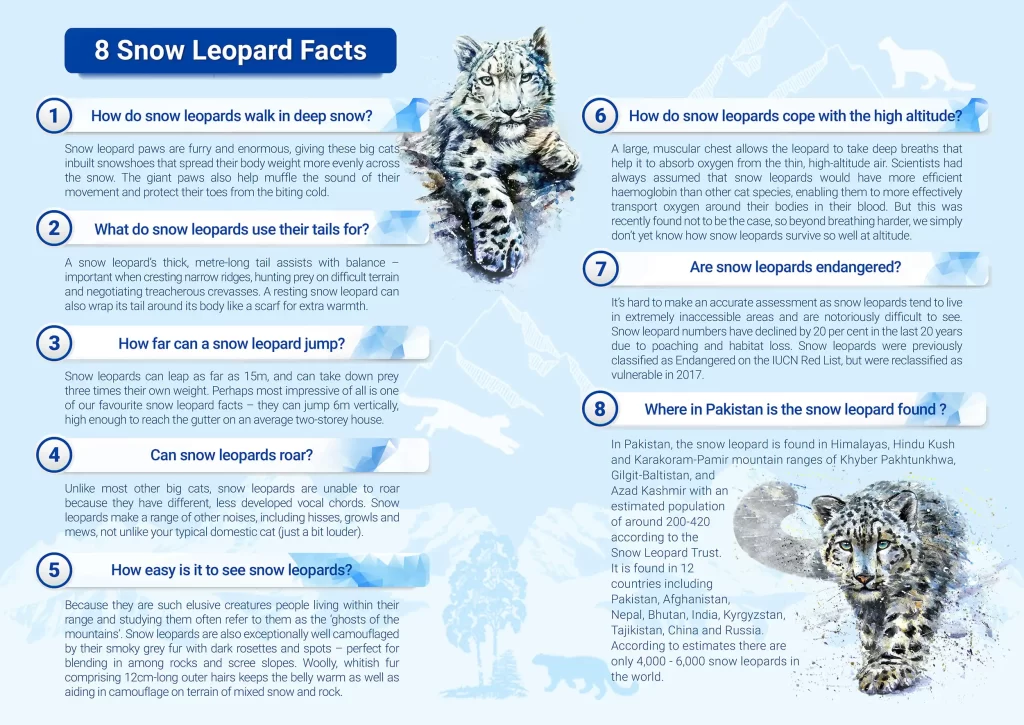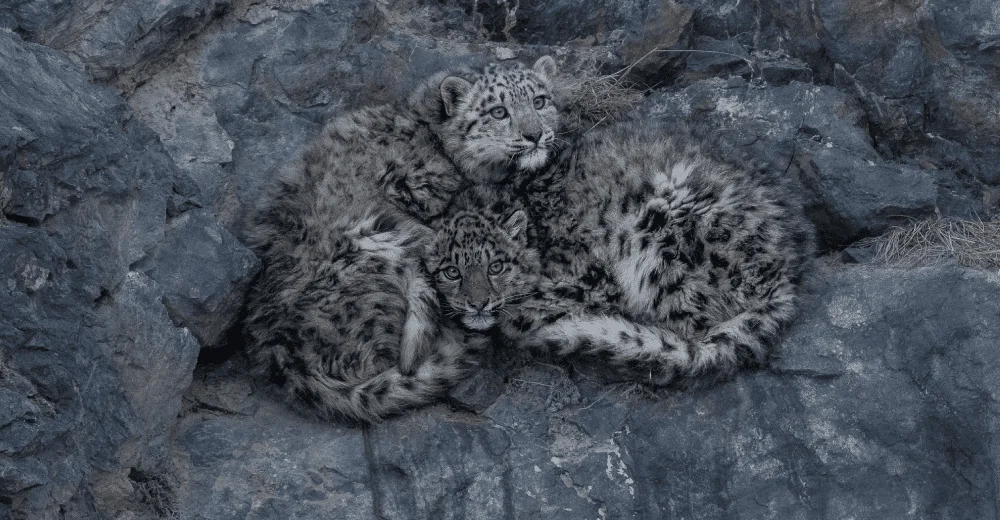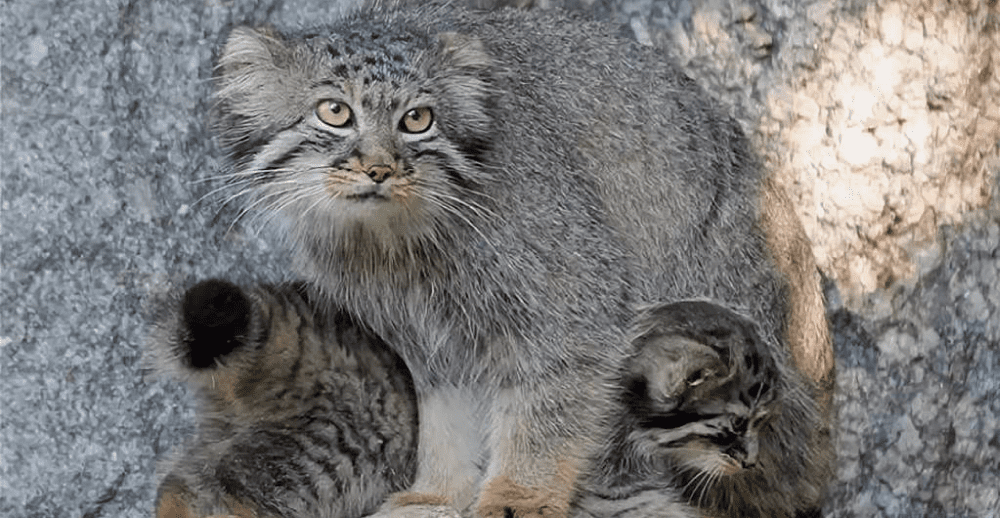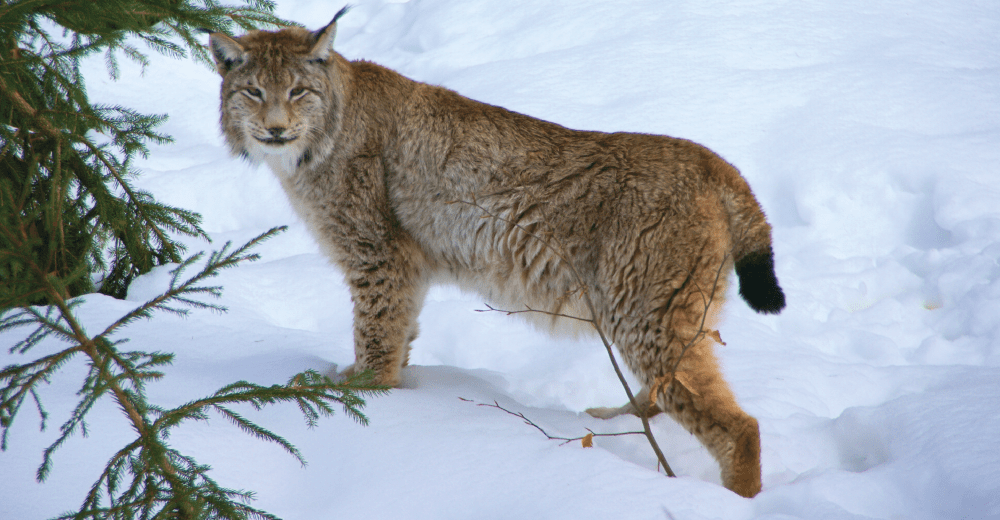The snow leopard (Uncia uncia), known for its beauty, is a remarkable species that play a key role as a prime predator as well as an indicator of the health of its high-altitude habitat. Of the big cats, snow leopards are the smallest that have adapted to mountainous habitats In Central Asia including the Altai, Tian Shan, Kun Lun, Pamir, Hindu Kush, Karakorum, and Himalayan mountain ranges.
The snow leopard’s habitat extends through twelve countries: Afghanistan, Bhutan, China, India, Kazakhstan, Kyrgyzstan, Mongolia, Nepal, Pakistan, Russia, Tajikistan, and Uzbekistan. In the Himalayas, snow leopards are usually found between 3,000 and 5,400 meters above sea level. In Mongolia and Russia, these cats are found at lower altitudes of 1000 meters. At the snow leopard’s typical elevation, the climate is cold and dry, and only grasses and small shrubs can grow on the steep mountain slopes.
If snow leopards thrive so will countless other species, as well as the millions of people whose livelihoods depend on the rivers flowing down from Central Asia’s mountains.
Snow leopards known for their elusive nature, are referred to as
Mountain Ghosts
DID YOU KNOW?
There are believed to between 3,500 and 7,000 snow leopards living in the wild today Snow leopard habitat is spread over an area about 80,000 km square in Pakistan, of which over 60% of the range is in GB, where two protected areas. Khunjerab national park and central Karakoram national park are known to make the core snow leopard area Snow leopards inhabit extreme landscapes approximately 2500-5000 meters above sea level

Physical Features of Snow Leopards
The snow leopard has a head to body length of 1 to 1.3 meters, a tail length of 0.8 to 1.1 meters, and weighs between 20 to 52 kilograms. The snow leopard’s long fluffy tail helps it maintain balance when leaping between rocks, moving rapidly on steep slopes, and in pursuit of prey. The tail also provides extra warmth when it’s wrapped around the body. Moreover, the snow leopard has strong, short front limbs and longer hind limbs that help it launch up to 30 feet (10 meters) in one leap.
The snow leopard has perfectly adapted to its habitat in the high elevation areas that are mostly covered in snow. Notably, its extra-large paws act like a pair of natural snowshoes and keeps the cat from sinking into the snow. The snow leopard has sensitive lungs that allow it to optimize oxygen intake from the low levels at high elevations while conserving heat energy. Its round, short ears reduce heat loss, and the wide, short nasal cavity warms the air before it reaches the cat’s lungs. The snow leopard has the longest and densest pelage of any Panthera species. Besides, its soft, dense fur grows extra-thick during the winter to make the animal well insulated and camouflaged to survive in a cold environment. The coat of the snow leopard is white to cream-yellow, mottled with grey to black spots and rosettes.
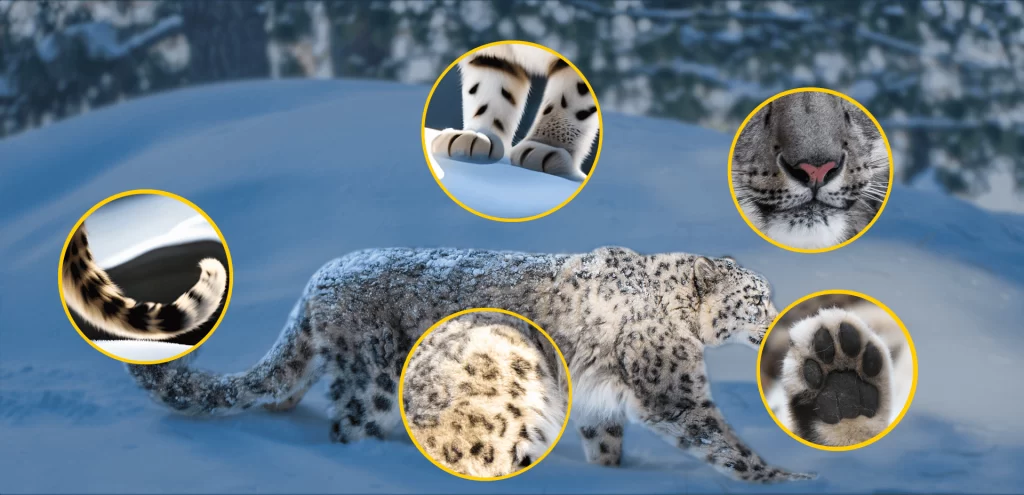
- Snow Leopard nose: The wide nasal cavity of a snow leopard warms the chilling air before it reaches the cat’s lungs.
- Snow Leopard Paws: The extra-large paws of a snow leopard act as snowshoes.
- Snow Leopard Tail: The snow leopard uses its exceptionally long tail for balance in the mountainous terrain.
- Snow Leopard Fur: The snow leopard has soft, dense fur that grows extra-thick during the winter.
- Snow Leopard Legs: Like snowshoes, the snow leopard’s large paws help it walk on snow and its hind legs give the snow leopard the ability to leap six times the length of its body.
